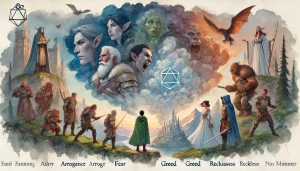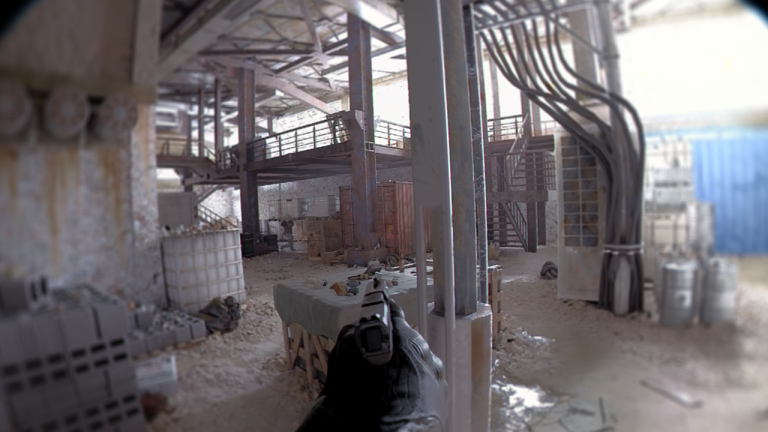In the vast and varied world of video games, few genres have sparked as much debate and passion as roguelikes. These games, known for their punishing difficulty and endless replayability, have captivated players for decades. But what exactly defines a roguelike? The answer isn’t as straightforward as you might think, and it’s a question that has led to heated discussions among gamers and developers alike.
The term “roguelike” comes from the 1980 game “Rogue,” which laid the foundation for an entire genre. Since then, countless games have drawn inspiration from Rogue’s unique blend of procedural generation, permadeath, and turn-based gameplay. As the genre has evolved, so too has the definition of what constitutes a true roguelike. This has given rise to the roguelike vs roguelite debate, with purists arguing for a strict adherence to traditional elements while others embrace a more flexible interpretation.
In this article, we’ll dive deep into the world of roguelikes, exploring their origins, key characteristics, and evolution over time. We’ll examine the Berlin Interpretation, a set of guidelines created by roguelike developers to define the genre. We’ll also look at how modern games have adapted and expanded upon the classic roguelike formula, blurring the lines between roguelikes and roguelites. Whether you’re a longtime fan of the genre or a curious newcomer, this exploration will give you a comprehensive understanding of what makes a roguelike tick.
The Origins of Roguelikes
The story of roguelikes begins in 1980 with the release of “Rogue,” a dungeon-crawling game developed by Michael Toy and Glenn Wichman. At the time, Toy and Wichman were students at the University of California, Santa Cruz, working on the university’s Unix systems. They set out to create a game that could be played on the text-based terminals of the era, drawing inspiration from earlier text adventures and Dungeons & Dragons.
Rogue introduced several revolutionary concepts that would become hallmarks of the genre. The game featured procedurally generated dungeon levels, ensuring that each playthrough was unique. This was a significant departure from the hand-crafted levels of most games at the time. Rogue also implemented a permadeath system – once your character died, you had to start over from the beginning. This unforgiving mechanic added weight to every decision and created a sense of tension that kept players on the edge of their seats.
The game’s turn-based combat system allowed players to carefully consider their moves, adding a strategic element to the dungeon crawling. Rogue also featured a wide variety of items, monsters, and environmental hazards, creating complex interactions that players had to learn and master. The ASCII graphics, while simple by today’s standards, allowed for a surprising amount of detail and left room for players’ imaginations to fill in the gaps.
Rogue quickly gained popularity among Unix users, spreading from university to university through early computer networks. Its addictive gameplay loop and infinite replayability struck a chord with players, inspiring many to create their own games in a similar vein. This led to the development of what are now considered classic roguelikes, such as Hack (later NetHack), Moria, and Angband. Each of these games built upon Rogue’s foundation, adding new features and mechanics while maintaining the core elements that made the original so compelling.
Key Characteristics of Roguelikes
As the roguelike genre grew and evolved, developers and fans began to debate what exactly constituted a “true” roguelike. This discussion culminated in the creation of the Berlin Interpretation at the International Roguelike Development Conference in 2008. The Berlin Interpretation aimed to provide a set of guidelines for defining roguelikes, outlining both high-value and low-value factors.
The high-value factors, considered essential for a game to be classified as a roguelike, include:
Random environment generation: Each playthrough presents a unique layout of levels, ensuring no two games are exactly alike.
Permadeath: When your character dies, the game is over, and you must start from the beginning.
Turn-based gameplay: Actions are taken in discrete turns, allowing for careful strategizing.
Grid-based movement: Characters move on a grid, typically in four or eight directions.
Non-modal gameplay: The rules remain consistent throughout the game, with no separate “modes” for different activities.
Complexity: The game features many interacting systems and entities, allowing for emergent gameplay.
Resource management: Players must carefully manage limited resources like food, equipment, and health.
Hack’n’slash gameplay: Combat is a central focus, typically involving melee or ranged attacks against monsters.
Exploration and discovery: Players are encouraged to explore the game world and uncover its secrets.
Low-value factors, which are common but not essential, include:
Single player character: The player controls a single character rather than a party.
Monsters similar to players: Enemies follow the same rules as the player character.
Tactical challenge: The game emphasizes strategic decision-making over reflexes.
ASCII display: While classic roguelikes used text characters for graphics, this is not a requirement.
Dungeons: The game world is often, but not always, a series of interconnected dungeon levels.
Numbers: Various game stats are represented numerically.
These factors provide a framework for understanding what makes a “true” roguelike, though it’s worth noting that not all games need to tick every box to be considered part of the genre. The Berlin Interpretation serves as a guideline rather than a strict ruleset, allowing for some flexibility in interpretation.
The Evolution of Roguelikes
As technology advanced and gaming platforms diversified, the roguelike genre began to evolve beyond its text-based roots. This evolution can be broadly divided into several phases, each building upon the foundations laid by classic roguelikes while introducing new elements and appealing to a wider audience.
The first major shift came with the introduction of tile-based graphics in the late 1980s and early 1990s. Games like NetHack and Ancient Domains of Mystery (ADOM) offered players the option to switch between traditional ASCII displays and more visually intuitive tile sets. This change made roguelikes more accessible to new players while still maintaining the complex gameplay that hardcore fans loved.
The late 1990s and early 2000s saw the emergence of what some call “coffee break roguelikes.” These games, such as DoomRL (later DRL) and Desktop Dungeons, streamlined the roguelike experience into shorter, more focused sessions. They maintained core elements like procedural generation and permadeath but simplified other aspects, making them more appealing to casual players or those with limited gaming time.
As indie game development tools became more accessible in the late 2000s and early 2010s, a new wave of roguelike-inspired games emerged. Titles like Spelunky, The Binding of Isaac, and FTL: Faster Than Light incorporated roguelike elements into other genres, creating hybrid experiences that appealed to a broader audience. These games often featured real-time gameplay instead of turn-based systems and added persistent progression elements, allowing players to unlock new content or abilities across multiple playthroughs.
This trend has continued into the present day, with critically acclaimed titles like Hades, Dead Cells, and Slay the Spire pushing the boundaries of what can be considered a roguelike. These games blend roguelike elements with genres as diverse as action platformers, deck-building card games, and narrative-driven RPGs. While purists might argue that these titles stray too far from the classic roguelike formula, their popularity has undoubtedly brought renewed attention to the genre as a whole.
Roguelike vs Roguelite: Understanding the Distinction
As the roguelike genre has evolved and expanded, a new term has entered the gaming lexicon: roguelite. This term is used to describe games that incorporate some roguelike elements but deviate from the traditional formula in significant ways. The distinction between roguelikes and roguelites is often a matter of debate among players and developers, but there are some generally accepted differences.
Roguelikes, in the traditional sense, adhere closely to the principles outlined in the Berlin Interpretation. They typically feature turn-based gameplay, grid-based movement, and a high level of complexity. True roguelikes are often unforgiving, with permadeath being a core feature – when your character dies, you start over from the beginning with no carried-over progress. Examples of classic roguelikes include NetHack, ADOM, and Dungeon Crawl Stone Soup.
Roguelites, on the other hand, take inspiration from roguelikes but often incorporate elements from other genres. They might feature real-time gameplay instead of turn-based, or use more modern graphics and sound design. One of the most significant differences is that roguelites often include some form of persistent progression. While individual runs might end in death, players can unlock new items, characters, or abilities that carry over to future playthroughs. This softer approach to permadeath makes roguelites more accessible to a wider audience.
The line between roguelikes and roguelites can be blurry, and there’s often disagreement about where specific games fall. For example, games like Spelunky and The Binding of Isaac are sometimes referred to as roguelikes due to their procedurally generated levels and permadeath systems. However, their real-time gameplay and unlockable content place them firmly in the roguelite category for many purists.
It’s worth noting that the term “roguelite” isn’t meant to be pejorative. Many excellent games fall into this category, and the innovations brought by roguelites have helped to revitalize and expand the roguelike genre as a whole. The distinction is primarily useful for setting player expectations and facilitating discussions about game design within the community.
The Impact of Roguelikes on the Gaming Industry
The influence of roguelikes extends far beyond the boundaries of the genre itself. Many game designers have drawn inspiration from roguelike elements, incorporating them into a wide variety of games across different genres. This cross-pollination has led to some of the most innovative and engaging games of the past decade.
One of the most significant contributions of roguelikes to the broader gaming industry is the concept of procedural generation. While roguelikes weren’t the first games to use procedurally generated content, they popularized the technique and demonstrated its potential for creating nearly infinite replayability. Today, procedural generation is used in everything from open-world sandbox games like Minecraft to space exploration simulators like No Man’s Sky.
The permadeath mechanic, another staple of roguelikes, has also found its way into other genres. Games like XCOM and Darkest Dungeon have adapted this concept to create high-stakes, tension-filled experiences where every decision carries weight. Even some mainstream triple-A titles have experimented with permadeath modes, appealing to players looking for an extra challenge.
Roguelikes have also influenced game design philosophy, particularly in terms of difficulty and player learning. The genre’s emphasis on learning through failure, where each death is an opportunity to gain knowledge and improve, has been adopted by many challenging games outside the roguelike sphere. The immensely popular Dark Souls series, for example, shares this ethos of improvement through repeated attempts.
The Future of Roguelikes
As we look to the future, it’s clear that the roguelike genre will continue to evolve and adapt. The line between roguelikes and roguelites may become even more blurred as developers experiment with new ways to incorporate roguelike elements into different types of games.
One trend we’re likely to see is an increased focus on accessibility. While the hardcore difficulty of traditional roguelikes is part of their appeal, many developers are finding ways to make their games more approachable without sacrificing depth. This might involve optional difficulty settings, better tutorials, or more forgiving progression systems.
Virtual and augmented reality technologies present intriguing possibilities for the future of roguelikes. Imagine exploring a procedurally generated dungeon in VR, with each playthrough offering a truly unique and immersive experience. While there are challenges to overcome, such as how to implement turn-based gameplay in a VR environment, the potential for innovation is enormous.
We may also see roguelikes branching out into new thematic territories. While fantasy and science fiction settings are common in the genre, there’s plenty of room for roguelikes to explore other genres, from historical simulations to contemporary urban adventures. As indie developers continue to push the boundaries of what’s possible within the roguelike framework, we’re likely to see some truly unique and creative games emerge.
Another area of potential growth is in multiplayer roguelikes. While most roguelikes are single-player experiences, games like Risk of Rain have shown that roguelike elements can work well in cooperative multiplayer settings. As online gaming continues to grow in popularity, we might see more developers experimenting with ways to bring the roguelike experience to a multiplayer environment.
Conclusion
From its humble beginnings as a simple dungeon crawler to its current status as a diverse and influential genre, the roguelike has come a long way. The core elements that define roguelikes – procedural generation, permadeath, and complex systems – have proven to be remarkably versatile, spawning countless variations and inspiring innovation across the gaming industry.
Whether you’re a fan of traditional ASCII-based roguelikes, prefer the more accessible roguelite experiences, or simply enjoy games that have been influenced by roguelike design principles, there’s no denying the impact this genre has had on the world of gaming. As we look to the future, it’s exciting to imagine how roguelikes will continue to evolve and surprise us.
The ongoing debate about what truly defines a roguelike is likely to continue, but perhaps that’s part of the genre’s charm. Like the procedurally generated dungeons at the heart of these games, the roguelike genre itself is constantly shifting and presenting new challenges for players and developers alike.
So the next time you find yourself delving into a mysterious dungeon, facing certain death at every turn, take a moment to appreciate the rich history and ongoing evolution of the roguelike genre. Who knows? Your current run might just be the one where you make it to the end – or at least learn something new for next time.
The post What Makes a Roguelike? Defining the Classic Genre appeared first on LitRPG Reads.











